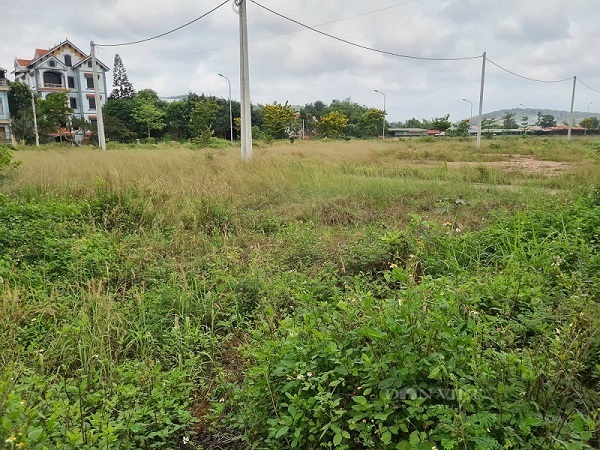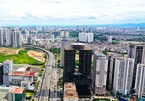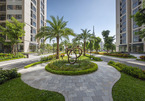
After half of year of hot land prices, the Ba Vi real estate market has cooled down since the pre-Tet days. However, a broker said the market remains very attractive with a wide range of products.
He said most investors want to buy land plots with a large area of over 1,000 sq m containing both residential land and land for perennial crop cultivation.
He showed prospective buyers a land plot of 1,700 sq m in Cam Linh commune. The plot, offered at VND4.8 billion, comprises 300 sq m of residential land while the remaining is perennial crop land with land-use rights until 2063.
“Large land plots which combine both residential and garden soil are cheap and can be used for many purposes, so they are favored by investors. After buying, they can split the plots into smaller ones for sale,” said the broker, adding that this kind of transaction accounted for 80 percent of his transactions in 2021.
The same situation can be seen in the suburbs of Hanoi, such as Thach That and Soc Son. Land plots in areas far from the center where infrastructure is underdeveloped have turned into hot products.
In the Central Highlands, garden and field land is also favored by investors, especially surfing investors, who buy to resell for profit, thanks to high liquidity.
In late December 2021, a field land plot of 1,200 sqm in Gia Nghia City of DakLak, sold for VND950 million. Just two weeks later, the plot once again was sold, but for VND1.1 billion.
Analysts say that land fever in suburban areas has occurred for many years, but the market has been especially hot over the last two years, when new trends appeared during the pandemic.
Batdongsan.com.vn in mid-2021 said that workers leaving for the countryside during the pandemic raised interest in garden, farming and resort land.
The trend developed throughout 2020 before it stopped in late 2020 and early 2021, when land fever in many areas got out of control. But in May 2021, when Covid returned strongly, the trend re-emerged. Land plots in the suburbs of Hanoi, such as Van Canh, Ba Vi, Hoa Lac, Soc Son, Quoc Oai, Son Tay and Xuan Mai, are in high demand. The prices increased by 2-7 percent within 1-2 months at times.
High expectations also create a busy market. In BaVi, for example, land prices have been escalating because of news about the Ba Vi – Suoi Hai national tourism area program.
“When land use is programmed, infrastructure will develop and then land prices will escalate. More tourism and resort complexes and service areas will appear, leading to higher demand for land,” a broker said.
Many investors end up making high profits, but many others run aground when injecting money into agricultural and garden land.
In principle, to make a profit, investors need to buy land early when the land use programming has not been announced. However, in many cases, the programming is not released as expected or the programming goes very slowly.
Another risk is that it takes time and effort to change land-use purposes from garden land to residential land. This requires investors to have huge capital to avoid capital shortages while waiting for procedures to be fulfilled.
The biggest risk is when land is taken back by the State for project development. If this occurs, landowners only receive compensation for agricultural land.
Therefore, experts said, in order to minimize risks when pouring money into agricultural land, investors need to find out if the garden land can be changed into residential land, and if so, they need to seek information about the costs and procedures they must follow.
Lam Tung

Vietnam to improve transparency of real estate market in 2022
The development of a real estate database has not been in line with the market in Vietnam over the years.

As prices escalate, apartments in Hanoi become unaffordable
Buyers who postponed their apartment purchase plans as they thought prices would fall after a long period of increasing prices now say they made a mistake. The prices have increased by 10-15 percent.